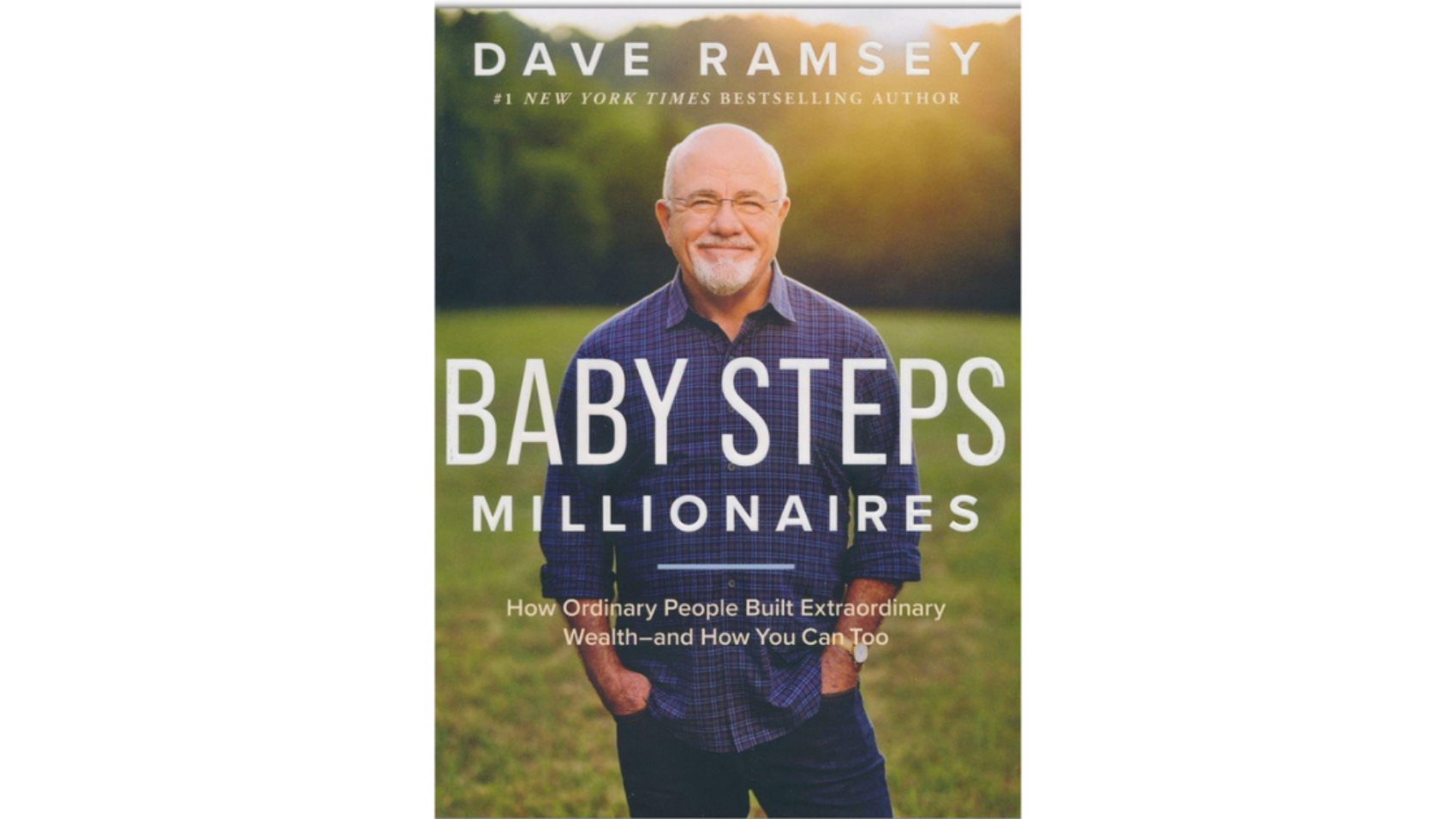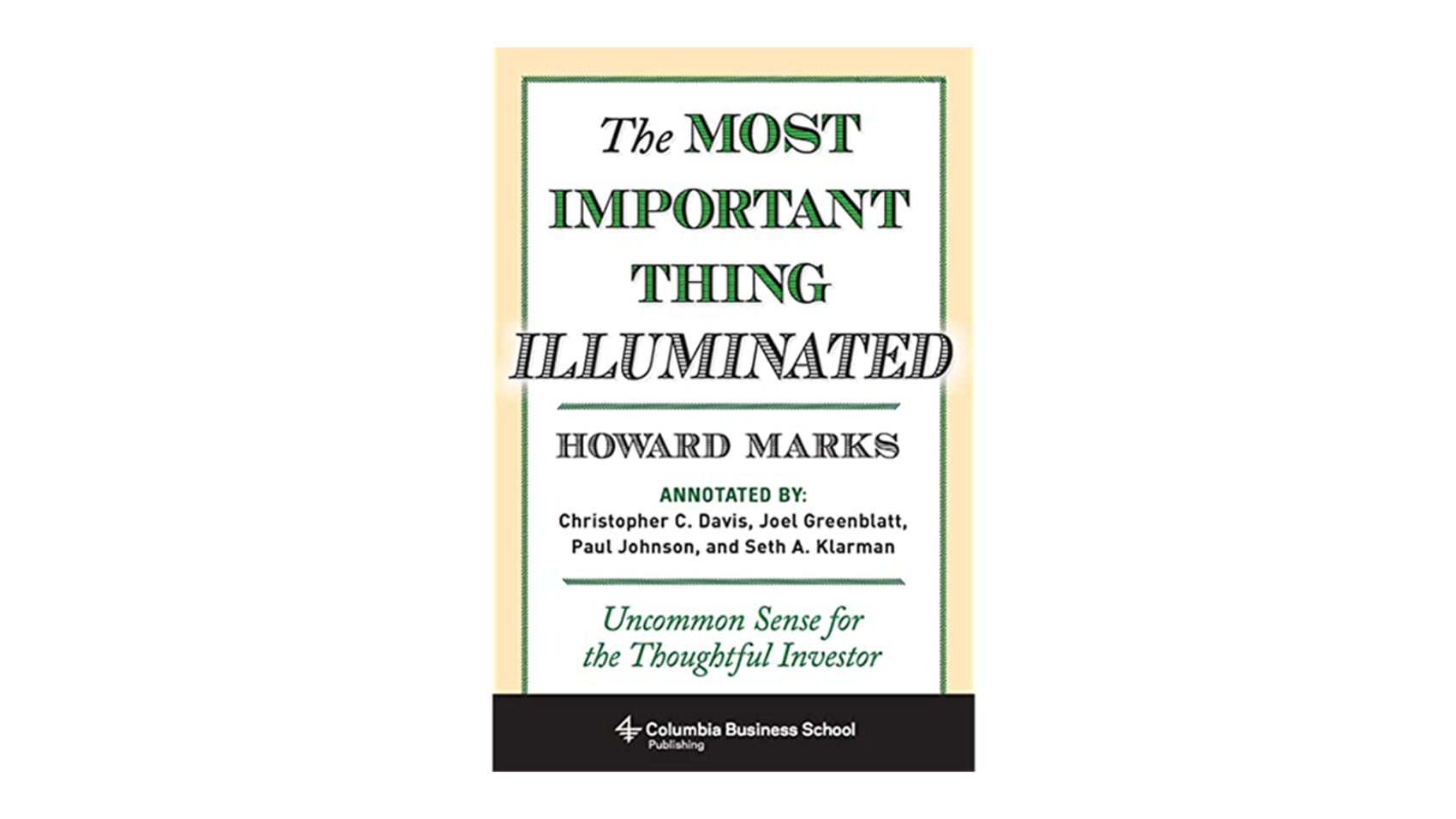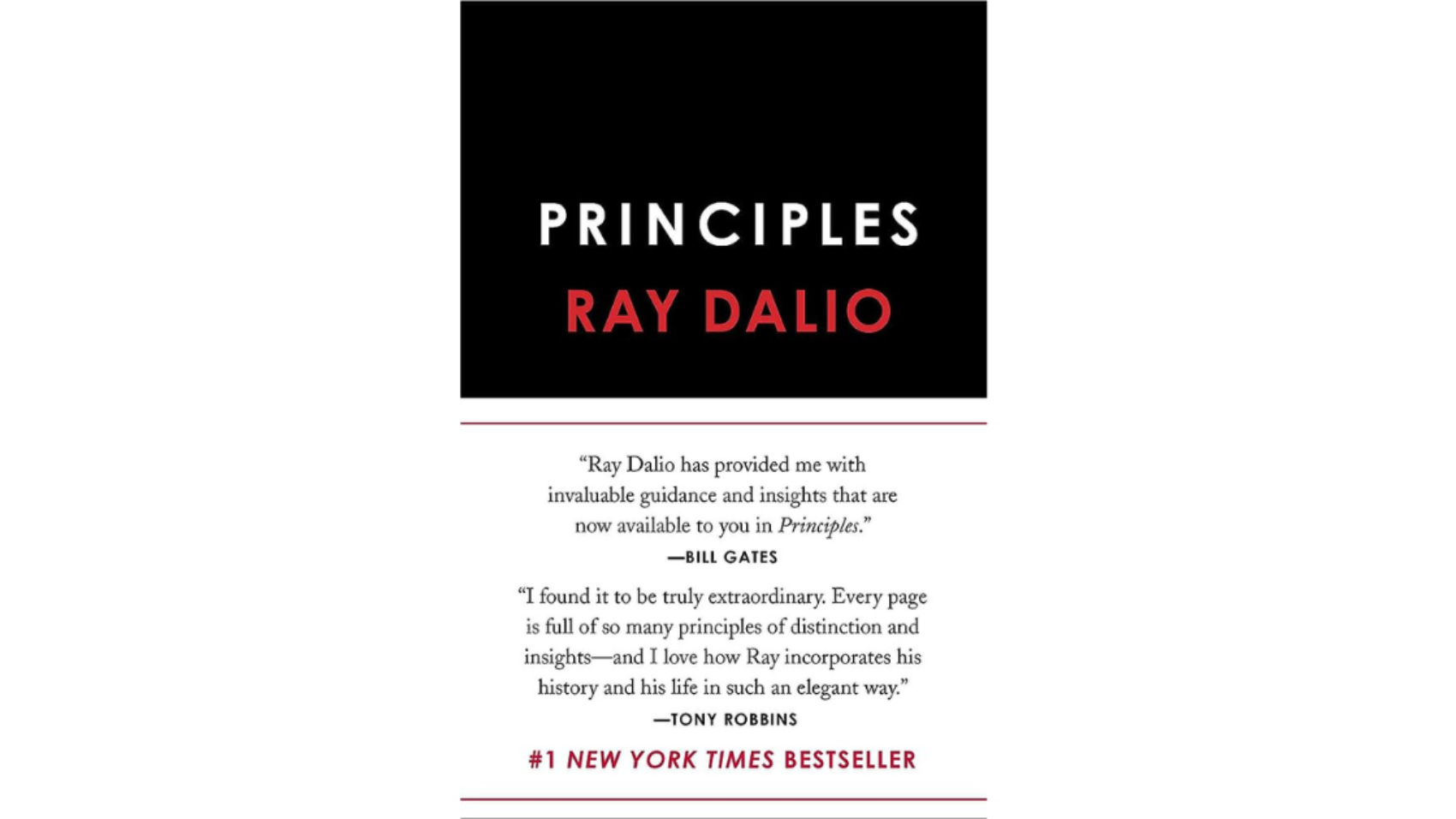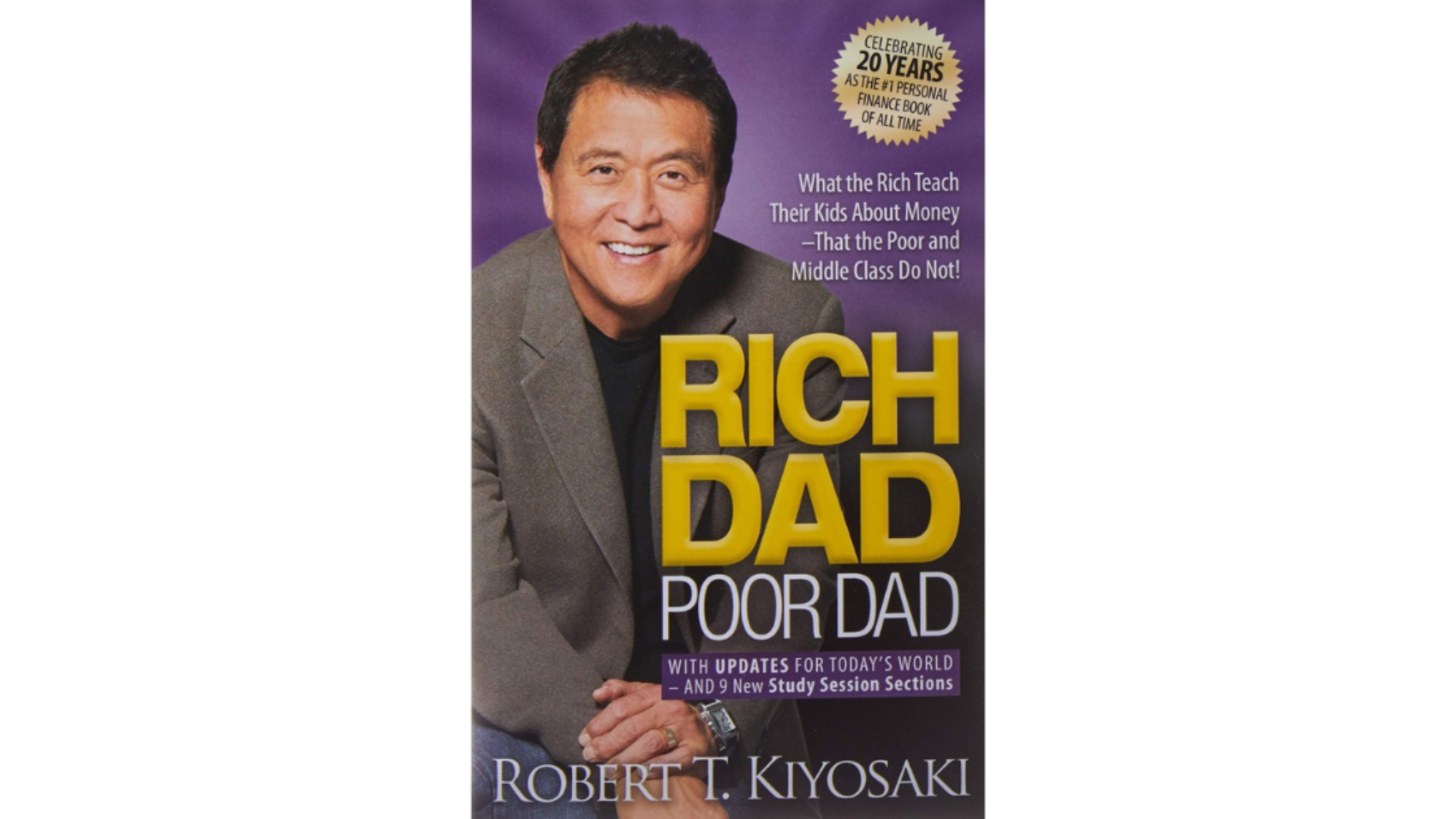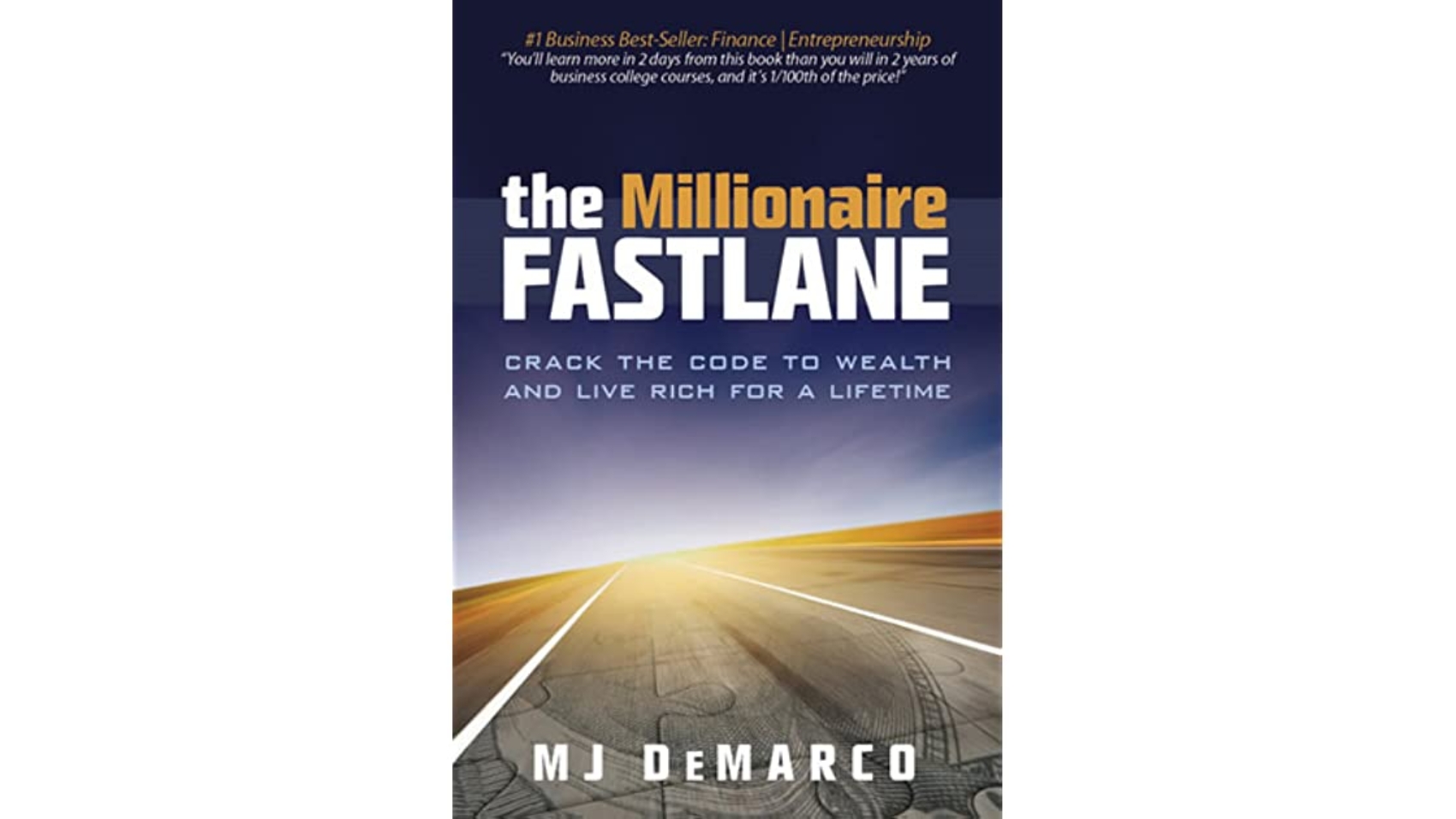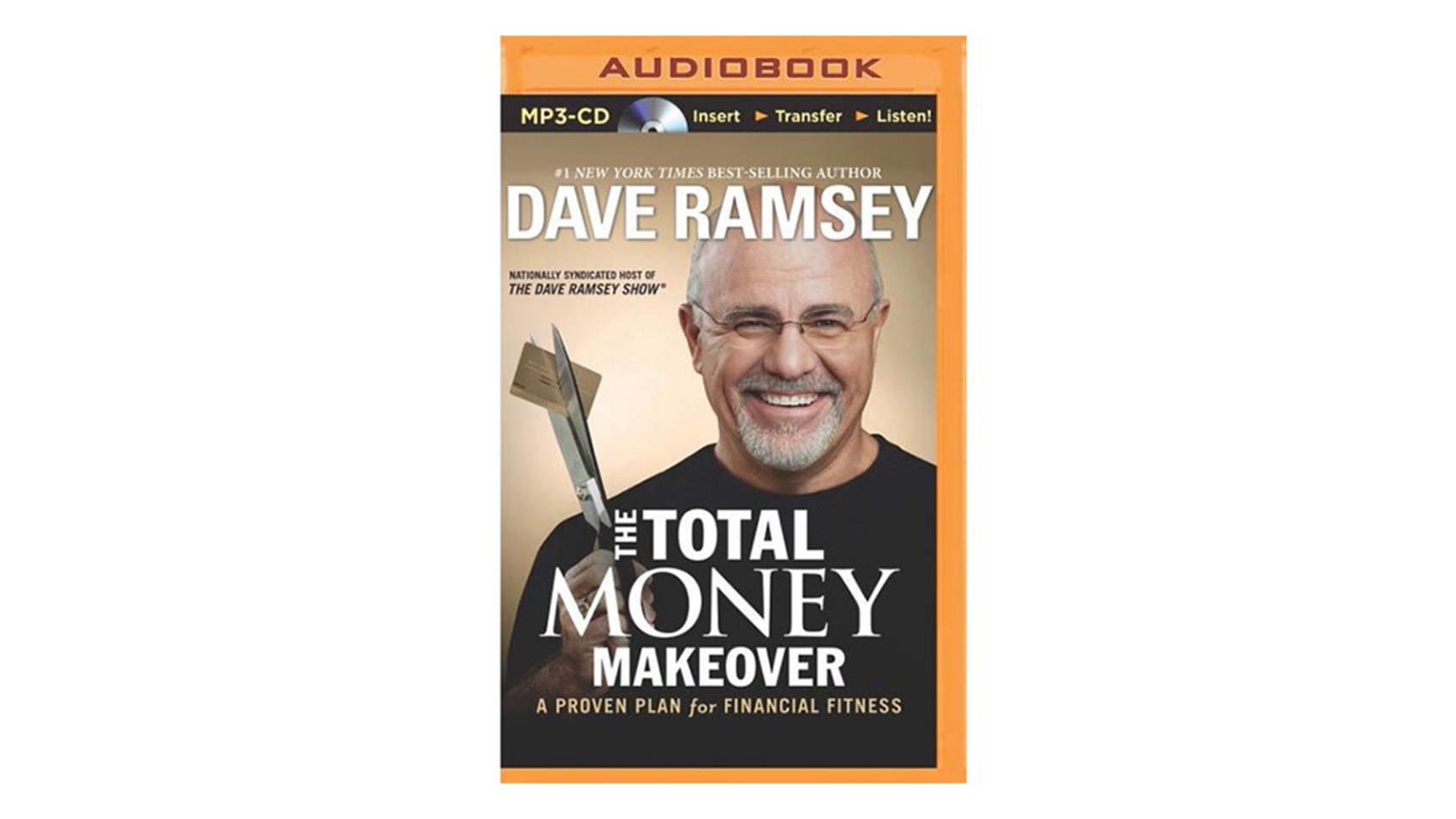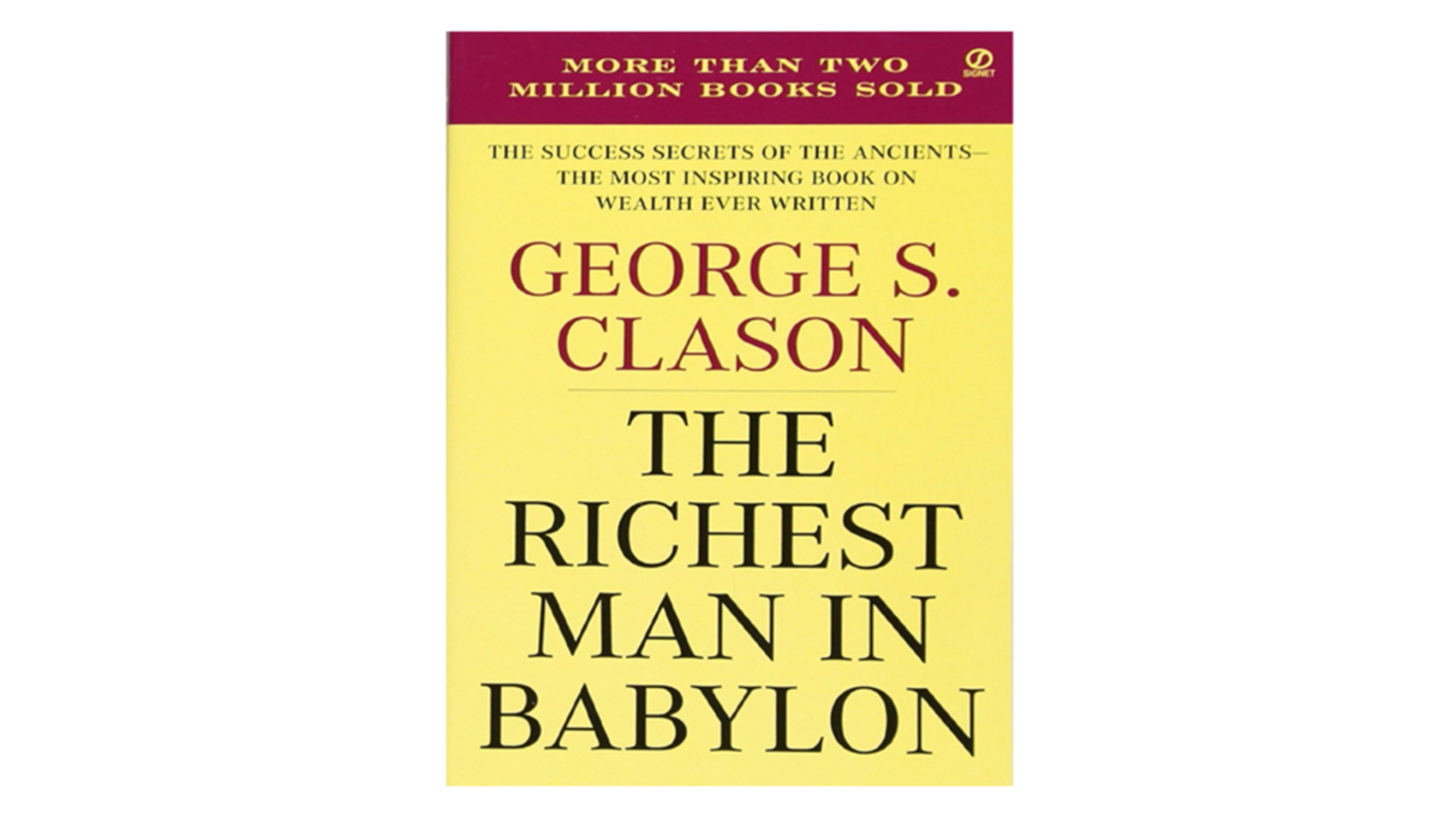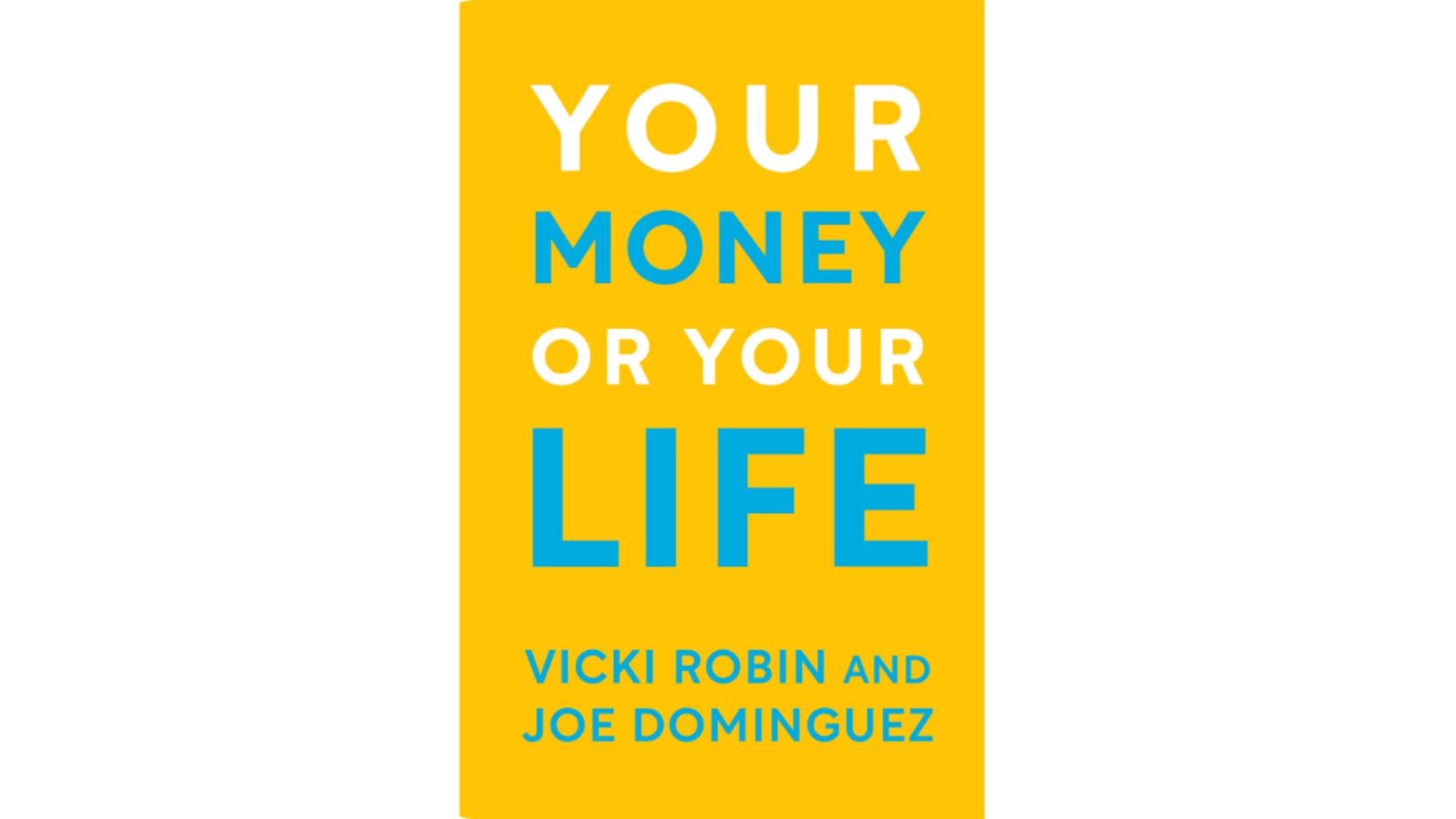How Ordinary People Built Extraordinary Wealth– and How You Can Too by Dave Ramsey
The most important thing
Uncommon Sense for the Thoughtful Investor by Howard Marks
Think and Grow Rich by Napoleon Hill
Book Summary
“Think and Grow Rich” is a classic self-help book that aims to teach readers the principles of success, wealth, and achievement. The book is based on interviews with successful people of the time, including Andrew Carnegie, Thomas Edison, Henry Ford, and many others. The book provides a framework for achieving success, both in business and in life, and emphasizes the importance of positive thinking, goal-setting, and self-discipline.
The book is divided into 13 chapters, each of which covers a different aspect of success and wealth-building. The main themes of the book include:
- The power of thought: Hill argues that success begins with the power of thought, and that the most successful people are those who can visualize their goals and work towards them with persistence and determination.
- The importance of desire: Hill emphasizes the importance of having a burning desire to achieve your goals, and provides practical tips for cultivating and maintaining that desire.
- The role of faith: The book explores the role of faith and belief in achieving success, and emphasizes the importance of maintaining a positive mental attitude in the face of challenges and setbacks.
- The power of imagination: Hill argues that the power of imagination is essential to achieving success, and provides practical tips for harnessing the power of your own imagination.
- The value of specialized knowledge: The book highlights the importance of specialized knowledge in achieving success, and provides practical advice on how to acquire and apply knowledge in a way that is most beneficial.
- The importance of persistence: Hill emphasizes the importance of persistence and determination in achieving success, and provides practical tips for overcoming obstacles and staying motivated.
- The value of planning and organization: The book explores the role of planning and organization in achieving success, and provides practical advice on how to set goals and develop a plan for achieving them.
Overall, “Think and Grow Rich” is a comprehensive guide to achieving success and wealth, and provides practical advice and tools for readers who want to improve their own lives and achieve their goals.
The Book in 3 Sentences
- “Think and Grow Rich” is a classic self-help book that teaches readers the principles of success and wealth-building.
- The book emphasizes the power of thought, the importance of desire and faith, the value of specialized knowledge, and the role of persistence and planning in achieving success.
- Overall, “Think and Grow Rich” provides practical advice and tools for readers who want to improve their lives and achieve their goals.
Impressions
- The power of positive thinking: The book emphasizes the importance of having a positive mental attitude and focusing on one’s goals and desires, rather than dwelling on negative thoughts and fears.
- The importance of perseverance: The book stresses that persistence is key to achieving success and encourages readers to keep working towards their goals, even when faced with setbacks and obstacles.
- The role of mindset in achieving success: “Think and Grow Rich” emphasizes that success is not just about external factors like education, skills, or luck, but also about one’s mindset and inner drive. The book encourages readers to develop a success-oriented mindset and to take action towards their goals.
How I Discovered It
“Think and Grow Rich” has been in print for over 80 years and has sold millions of copies worldwide, making it one of the most popular self-help books of all time. This book is comes highly recommended by value investors which is why I read it.
Who Should Read It?
- Entrepreneurs and business owners: The book provides valuable insights and tips for building a successful business and overcoming the challenges that come with entrepreneurship.
- Aspiring professionals: “Think and Grow Rich” offers guidance and inspiration for those who want to achieve success in their chosen profession or career path.
- Anyone interested in personal finance: The book offers practical advice on saving, investing, and managing money, which can be helpful for anyone who wants to improve their financial situation.
- Those seeking personal growth: The book encourages readers to adopt a positive mindset, develop good habits, and take action towards their goals, which can be beneficial for anyone seeking personal growth and self-improvement.
How the Book Changed Me
“Think and Grow Rich” was a transformative book for me.
- Changed mindset: The book emphasizes the importance of a positive, growth-oriented mindset and encourages you to adopt new ways of thinking. I felt more confident, motivated, and empowered after reading the book.
- Increased focus and clarity: The book encouraged me to focus on my goals and to take action towards achieving them. I become more focused and clear on my priorities after reading the book.
- Improved relationships: I experienced improvements in their personal and professional relationships as a result of reading the book.
My Top Quotes
- “Whatever the mind can conceive and believe, it can achieve.”
- “Desire is the starting point of all achievement, not a hope, not a wish, but a keen pulsating desire which transcends everything.”
- “The starting point of all achievement is desire. Keep this constantly in mind. Weak desire brings weak results, just as a small fire makes a small amount of heat.”
- “Education comes from within; you get it by struggle and effort and thought.”
- “The most powerful instrument we have in our hand is the power of our mind.”
- “Every adversity, every failure, every heartache carries with it the seed of an equal or greater benefit.”
- “Strength and growth come only through continuous effort and struggle.”
- “Success in its highest and noblest form calls for peace of mind and enjoyment and happiness which come only to the man who has found the work that he likes best.”
- “There is one quality which one must possess to win, and that is definiteness of purpose, the knowledge of what one wants, and a burning desire to possess it.”
- “Set your mind on a definite goal and observe how quickly the world stands aside to let you pass.”
Detailed Notes//Key Topics
- Desire: Hill argues that a strong desire is essential for achieving success. He encourages readers to identify their deepest desires and pursue them relentlessly.
- Faith: Hill emphasizes the importance of having faith in oneself and in one’s ability to achieve one’s goals.
- Autosuggestion: Hill argues that the mind can be trained to accept positive suggestions and that this can be a powerful tool for achieving success.
- Specialized knowledge: Hill stresses the importance of specialized knowledge, which he defines as the knowledge that is not generally available to the public. He argues that acquiring specialized knowledge is essential for achieving success.
- Imagination: Hill contends that the imagination is a powerful tool for achieving success and that it can be used to create a clear mental picture of one’s desired outcome.
- Organized planning: Hill argues that success requires a well-thought-out plan and that the plan should be put into action with persistence and determination.
- Persistence: Hill emphasizes the importance of persistence in the face of setbacks and challenges. He argues that persistence is essential for achieving long-term success.
- Mastermind: Hill encourages readers to form a “mastermind” group of like-minded individuals who can offer support, advice, and encouragement in the pursuit of their goals.
- Transmutation: Hill suggests that individuals can channel their sexual energy into creative pursuits and that this can be a powerful force for achieving success.
- The subconscious mind: Hill contends that a subconscious mind is a powerful tool for achieving success and that it can be trained to accept positive suggestions and beliefs.
The Millionaire Next Door
The Surprising Secrets of America’s Wealthy by Thomas J. Stanley
Rich Dad Poor Dad by Robert T. Kiyosaki
Book Summary
“Rich Dad Poor Dad” is a personal finance book written by Robert T. Kiyosaki that provides lessons on how to build wealth and achieve financial freedom. The book draws on the author’s experiences growing up with two father figures, one a traditional “poor dad” who worked hard and struggled to make ends meet, and the other a “rich dad” who taught Kiyosaki the importance of financial literacy and how to build wealth through investments and entrepreneurship.
The following are the key points from the book:
- The importance of financial literacy: Kiyosaki stresses the importance of gaining a basic understanding of financial concepts, such as the difference between assets and liabilities, and how to build wealth through investing and entrepreneurship.
- The value of entrepreneurship: Kiyosaki encourages readers to pursue entrepreneurship and start their own businesses, rather than relying on traditional employment to build wealth.
- The dangers of debt: The book cautions against the dangers of debt and the importance of avoiding debt whenever possible, especially consumer debt.
- The importance of passive income: Kiyosaki emphasizes the importance of building passive income streams, such as through investments and rental properties, as a means of achieving financial freedom.
- Breaking free from the traditional financial mindset: Kiyosaki encourages readers to break free from the traditional financial mindset and embrace new and innovative ways of thinking about money and wealth.
These are some of the key themes explored in “Rich Dad Poor Dad,” and the book provides a wealth of practical advice and inspiration for anyone looking to improve their financial situation and achieve financial freedom.
Top of Form
The Book in 3 Sentences
- The importance of financial education: The author emphasizes the need for financial education and how it is not taught in schools. He argues that this lack of education is the reason why many people struggle with money throughout their lives.
- The difference between assets and liabilities: Kiyosaki explains the difference between assets and liabilities, and how assets generate income while liabilities take money out of your pocket. He encourages readers to focus on building assets to achieve financial freedom.
- The power of passive income: The author stresses the importance of passive income, which is income received from sources other than a traditional job. He encourages readers to work towards building multiple streams of passive income, which can help them achieve financial independence.
Impressions
Eye-opening: The book is an eye-opening experience, as it challenges conventional wisdom about money and finance.
Inspiring: It encourages you to think differently about money and finances and to take control of your financial future.
Practical: The book is practical and provides you with concrete steps to improve your financial situation.
Controversial: While the book has the above positives, some financial experts have criticized the author’s advice and his approach to finance.
How I Discovered It
“Rich Dad Poor Dad” by Robert T. Kiyosaki is one of the best-selling personal finance books of all time, and it has been widely read and recommended. I was recommended this book by one on my line managers.
Who Should Read It?
“Rich Dad Poor Dad” by Robert T. Kiyosaki is a personal finance book that provides a different perspective on money and investing. It is recommended for people who want to learn about personal finance, investing, and building wealth. The book is popular among those who are looking for a guide on how to take control of their finances and build a secure financial future. The book is also recommended for those who are seeking financial freedom and want to learn about alternative ways of building wealth.
How the Book Changed Me
I had a shift in my mindset and attitude towards money after reading “Rich Dad Poor Dad”. The book challenges traditional thinking about money, work, and investing and encouraged me to think outside the box when it comes to my finances.
I felt empowered and motivated to make changes in my financial life. This was the book that planted the seed in my mind for financial independence.
My Top Quotes
- “The rich don’t work for money. They have money work for them.”
- “The more you learn, the more you earn.”
- “Your mind is your greatest asset, or liability.”
- “Intelligence solves problems and produces money. Money without financial intelligence is money soon gone.”
- “The most important thing in life is financial intelligence.”
- “Your home is not an asset, it’s a liability.”
- “Work to learn, don’t work for money.”
- “You’re only poor if you give up. The most important thing is that you don’t give up.”
- “The size of your success is measured by the strength of your desire; the size of your dream; and how you handle disappointment along the way.”
- “Successful people ask better questions, and as a result, they get better answers.”
Detailed Notes//Key Topics
- The importance of financial education: Kiyosaki argues that formal education does not typically teach people how to manage money, and stresses the importance of seeking out financial knowledge on your own.
- The difference between assets and liabilities: Kiyosaki explains the difference between assets (such as rental properties or stocks) and liabilities (such as a mortgage or credit card debt), and argues that acquiring assets is the key to building wealth.
- The importance of passive income: Kiyosaki emphasizes the importance of developing sources of passive income, such as rental properties or a successful business, in order to achieve financial freedom.
- The dangers of debt: Kiyosaki warns against taking on too much debt, especially consumer debt, as it can limit financial freedom and prevent people from building wealth.
- The benefits of taking calculated financial risks: Kiyosaki encourages people to take calculated financial risks, such as investing in real estate or starting a business, as a way to build wealth and achieve financial freedom.
The Millionaire Fastlane by MJ DeMarco
Book Summary
“The Millionaire Fastlane” is a book written by MJ DeMarco that offers a unique perspective on wealth building and financial freedom. The main thesis of the book is that traditional financial advice, such as saving, investing, and living below your means, is not a reliable path to wealth and that there is a faster, more efficient way to build wealth.
Here is a brief summary of the book in three bullet points:
- Alternative path to wealth: The book presents an alternative path to wealth, where individuals can build wealth quickly by creating businesses or investing in profitable opportunities.
- Rejection of traditional financial advice: The book argues that traditional financial advice, such as living below your means, saving, and investing, is not a reliable path to wealth and that it is better to focus on creating passive income streams that generate significant profits.
- Entrepreneurship as the key to wealth: The book argues that entrepreneurship is the key to wealth and that starting a business, investing in real estate, or becoming involved in other profitable opportunities is a much more efficient way to build wealth than relying on a steady income and saving.
Overall, “The Millionaire Fastlane” is a thought-provoking book that offers a unique perspective on wealth building and financial freedom. It challenges traditional financial advice, offering an alternative approach to building wealth and financial stability.
The Book in 3 Sentences
- Alternative path to wealth: The book argues that traditional financial advice is slow and unreliable, and instead presents an alternative path to wealth through entrepreneurship, investment, and creating passive income streams.
- Rejection of conventional wisdom: The book challenges conventional financial wisdom, such as living below your means, saving, and investing, and argues that these strategies are not sufficient for building wealth.
- Emphasis on entrepreneurship: The book places a strong emphasis on entrepreneurship as a means of building wealth and achieving financial freedom. The author argues that creating businesses or investing in profitable opportunities is a more efficient way to build wealth than relying on a steady income and savings.
Impressions
Inspiring and motivational: I appreciated the author’s unconventional approach to wealth building.
Controversial: The book has controversial ideas as the author rejects conventional financial wisdom.
Practical tips and advice: The book offers practical tips and advice, including steps to start a business, invest in real estate, and become involved in other profitable opportunities.
Easy to read: The book is easy to read and accessible, with a conversational tone that makes the concepts and ideas presented easier to understand.
How I Discovered It
I discovered the book through recommendations from business associates who have read it and found it inspiring.
Who Should Read It?
“The Millionaire Fastlane” is suitable for anyone looking to improve their financial situation and build wealth, particularly those who are interested in an alternative approach to traditional financial advice. The book may be especially appealing to:
Entrepreneurs and aspiring entrepreneurs: The book places a strong emphasis on entrepreneurship as a means of building wealth, and may be especially relevant for those who are looking to start a business or are already running a business.
Investors: The book provides insights into different investment strategies and may be of interest to those looking to build wealth through investments.
Young adults: The book’s ideas and approach may be especially appealing to young adults who are looking to build wealth and secure their financial future.
Anyone looking to challenge conventional financial wisdom: The book provides an alternative approach to traditional financial advice and may be of interest to those who are looking for a more unconventional or innovative approach to building wealth.
How the Book Changed Me
Mindset shift: The book provided a new perspective on wealth-building and financial success, and it helped me to think differently about money and my financial goals.
Increased motivation: The book provided a clear and compelling vision of financial freedom, and it motivated me to take action and make positive changes in my financial life.
A more focused and strategic approach to building wealth: I become more focused and strategic in my approach to building wealth as a result of reading the book.
Challenging conventional financial wisdom: I also become more open-minded and curious about different approaches to wealth-building after reading the book.
My Top Quotes
- “The road to wealth is paved with tons of education, mountains of courage, and valleys of persistence.”
- “If you want to live like no one else, you have to be willing to live like no one else.”
- “The best investment you can make is in yourself.”
- “Success is achieved and maintained by those who try and keep trying.”
- “The Fastlane is the path of least resistance; it’s the easier, faster, and smarter way to wealth.”
- “The rich don’t work for money, they make money work for them.”
- “Wealth is not about having a lot of money, it’s about having a lot of options.”
- “The poor and middle-class work for money. The rich have money to work for them.”
- “Your income is the sum total of the value you bring to the marketplace.”
- “You are your greatest asset. Put your time, effort, and money into training, grooming, and encouraging your greatest asset.”
Detailed Notes//Key Topics
- The importance of financial education: The book argues that financial education is the foundation for building wealth and achieving financial success.
- The difference between the Slow Lane and the Fast Lane: The author differentiates between the traditional “Slow Lane” approach to wealth creation and the faster, more efficient “Fast Lane” approach.
- The concept of “driving your wealth”: The book argues that wealth creation is not simply about saving and investing, but rather about “driving” your wealth through smart, strategic decisions.
- The importance of creating passive income streams: The book discusses the importance of creating multiple passive income streams so that your wealth can grow even when you are not actively working.
- The role of entrepreneurship: The author argues that entrepreneurship is the fastest and most efficient way to achieve wealth, and provides practical advice for starting and growing a successful business.
- The importance of avoiding debt: The book argues that debt is a major barrier to wealth creation, and provides practical strategies for reducing and eliminating debt.
- The importance of having a clear, focused vision: The author argues that a clear, focused vision is essential for staying motivated and focused on your goals, and provides practical advice for developing a vision for your life and financial future.
Total Money Makeover: A Proven Plan for Financial Fitness by Dave Ramsey
Book Summary
“The Total Money Makeover” by Dave Ramsey is a personal finance book that provides a comprehensive plan for achieving financial freedom and security. The book is divided into seven steps, each of which focuses on a different aspect of personal finance. The steps are:
- Build an emergency fund: The book emphasizes the importance of having a cash reserve to cover unexpected expenses.
- Pay off all debt: The book teaches readers how to eliminate debt, starting with the debt with the highest interest rate.
- Save for a down payment on a home: The book encourages readers to save for a home purchase and to live below their means in order to achieve this goal.
- Invest in retirement: The book teaches readers about the importance of saving for retirement and provides advice on how to create a retirement plan.
- Save for college: The book encourages readers to plan for their children’s education expenses and provides advice on how to save for college.
- Pay off your home early: The book encourages readers to pay off their mortgage early, freeing up more of their income for other financial goals.
- Build wealth and give: The book teaches readers how to build wealth, live within their means, and make charitable contributions.
In addition to these seven steps, the book provides practical advice on budgeting, saving, investing, and other key aspects of personal finance. “The Total Money Makeover” is a comprehensive guide to achieving financial fitness and security, and it has helped many people to improve their financial situation and achieve their financial goals.
The Book in 3 Sentences
- Debt elimination: The book focuses on paying off all debt, starting with the debt with the highest interest rate.
- Saving and investing: The book encourages readers to save for a home, retirement, college, and other financial goals. It also provides advice on investing for the future.
- Comprehensive financial plan: The book provides a seven-step plan for achieving financial freedom and security, covering everything from building an emergency fund to paying off debt, saving for a home, investing for retirement, and building wealth.
Impressions
- Practical and actionable advice: I can appreciate the book for its straightforward and practical advice on personal finance. The book provides a clear and actionable plan for achieving financial freedom and security.
- Emphasis on debt elimination: One of the key messages of the book is the importance of paying off all debt, I can appreciate this emphasis. The book provides a step-by-step plan for paying off debt and achieving financial freedom, which has been helpful.
- Inspiring and motivational: The book is an inspiring and motivational read, and I welcome the book’s positive and optimistic approach to personal finance. The book encourages you to take control of your finances and pursue your financial goals with determination and discipline.
- Easy to understand: I admire the book’s clear and straightforward language, which makes it easy to understand even for those who are new to personal finance. The book provides practical advice that is accessible and useful for people at all levels of financial literacy.
How I Discovered It
Dave Ramsey is a well-known personal finance expert and hosts a popular radio show, “The Dave Ramsey Show.” I discovered “The Total Money Makeover” through watching one of his stage events.
Who Should Read It?
- People in debt: If you are struggling with debt and are looking for a plan to pay it off and achieve financial freedom, this book can be a valuable resource.
- People who want to improve their financial situation: Whether you are looking to save for a home, retirement, college, or other financial goals, this book provides practical and actionable advice for achieving financial security and stability.
- Young adults and students: The book provides a solid foundation for young adults and students who are just starting to build their financial futures, and it can be a valuable resource for anyone looking to improve their financial literacy.
- People who want to get on a budget: The book provides a step-by-step plan for creating a budget and sticking to it, which can be helpful for anyone looking to better manage their finances.
- People looking for a comprehensive financial plan: The book provides a comprehensive seven-step plan for achieving financial freedom and security, and it can be a valuable resource for anyone looking for a comprehensive financial plan that covers all aspects of personal finance.
How the Book Changed Me
- Improved budgeting and spending habits: The book provides a step-by-step plan for creating a budget and sticking to it. I was already using my own tracker but after reading this book I took it to the next level which helped me improve my spending habits and management of finances.
- Increased savings: I increased savings and investment after following the steps outlined in the book.
- Improved financial literacy: The book provides a comprehensive overview of personal finance and covers a wide range of topics, from debt elimination and budgeting to investing and retirement planning. I improved financial literacy and a better understanding of personal finance after reading the book.
My Top Quotes
- “If you will live like no one else, later you can live like no one else.”
- “Live like no one else now, so later, you can live and give like no one else.”
- “We buy things we don’t need with money we don’t have to impress people we don’t like.”
- “You must gain control over your money or the lack of it will forever control you.”
- “The rich don’t work for money; they make money work for them.”
- “A budget is telling your money where to go instead of wondering where it went.”
- “Debt is a slippery slope and it will pull you under faster than the rapids in a river.”
- “We cannot live above our means and expect to have peace in our hearts and wallets.”
- “The only way to win with money is to have a plan and stick to it.”
- “You can’t out-earn stupid.”
Detailed Notes//Key Topics
- Debt elimination: One of the main focuses of the book is helping people pay off debt and become debt-free. Dave Ramsey provides a step-by-step plan for eliminating debt, including strategies for paying off credit card debt, student loans, and other forms of debt.
- Budgeting: The book provides a comprehensive overview of budgeting and helps readers create a budget that works for their individual financial situation.
- Saving and investing: The book emphasizes the importance of saving and investing for the future and provides practical advice on how to build wealth over time.
- Financial literacy: The book provides a comprehensive overview of personal finance, covering a wide range of topics, from debt elimination and budgeting to investing and retirement planning.
- Emergency fund: The book stresses the importance of having an emergency fund to provide a safety net in case of unexpected events or emergencies.
- Career development: The book provides advice on how to develop a career that supports your financial goals and provides a stable source of income.
- Retirement planning: The book covers the importance of planning for retirement and provides practical advice on how to build a nest egg for the future.
The Richest Man in Babylon by George S. Clason
jumpstart Your Income, Your Life, Your Success by Darren Hardy
Your Money Or Your Life by Vicki Robin
Book Summary (Can you please share the summary of the book )
“Your Money or Your Life” is a personal finance book written by Vicki Robin and Joe Dominguez. The book outlines a step-by-step program for transforming your relationship with money and achieving financial independence. Here are a few key points from the book:
- Tracking your spending: One of the key elements of the program is tracking all of your spending for a period of time so that you can get a clear understanding of where your money is going.
- Reducing expenses: Once you have a clear picture of your spending habits, the book encourages you to look for ways to reduce your expenses. This includes cutting back on things like eating out, entertainment, and shopping, as well as finding ways to reduce your bills for things like housing, utilities, and transportation.
- Building a savings cushion: The book emphasizes the importance of building an emergency savings fund, so that you are prepared for unexpected expenses and can avoid taking on debt.
- Investing in yourself: The book argues that one of the best investments you can make is in yourself, by developing new skills, building your knowledge, and pursuing your passions.
- Building wealth through smart investments: The book provides guidance on how to invest your money in a way that will help you build wealth over time, while minimizing risk.
- Living on less: The book encourages you to adopt a simpler lifestyle and live on less, so that you can free up more of your money to invest in your financial future.
- Staying motivated: The book provides tips and strategies for staying motivated and on track with your financial goals, even when the road ahead seems long and challenging.
Top of Form
The Book in 3 Sentences
- Track all spending and reduce expenses: The book outlines a step-by-step program for tracking your spending and reducing expenses, so you can have a clear understanding of your spending habits and find ways to cut back on unnecessary expenses.
- Build wealth through smart investments: The book provides guidance on how to invest your money in a way that will help you build wealth over time, while minimizing risk.
- Live a simpler life: The book encourages a simpler lifestyle, focusing on living on less and freeing up money to invest in your financial future and other important things in life like skills, knowledge, and passions.
Impressions
- Eye-opening: Tracking spending and expenses helps you become more mindful of your spending habits and how much money you waste on things they don’t really need.
- Empowering: The book empowers you to take control of your finances and make the changes necessary to achieve financial independence.
- Inspiring: You are inspired to make changes to their financial situation, and find the book’s step-by-step approach to be both manageable and achievable.
- Life-changing: The book can be a catalyst for making significant changes in your life, leading to greater financial stability and peace of mind.
How I Discovered It
The book is widely reviewed online, and many financial bloggers and personal finance experts have written about it, making it easier for people to discover the book. I was recommended the book by our local Hills district librarians.
Who Should Read It?
“Your Money or Your Life” is recommended for anyone who wants to improve their financial situation, regardless of their current financial status. This includes people who are living paycheck-to-paycheck, those who are struggling to pay off debt, and those who want to save more money and achieve financial independence. The book is particularly helpful for those who are feeling overwhelmed by their finances, who are struggling to make ends meet, or who are looking for a step-by-step guide to improving their financial situation. The book is written in a practical, down-to-earth style, and its focus on tracking expenses and becoming more mindful of spending habits makes it a good fit for people who are looking for a straightforward, no-nonsense approach to managing their finances.
How the Book Changed Me
Some of the most changes I experienced after reading the book include:
- Increased awareness of my spending habits and a greater understanding of where my money is going
- Improved budgeting skills and the ability to live below my means
- A greater focus on building wealth and saving for the future
My Top Quotes
- “Our relationship with money reflects our relationship with life.”
- “Our net worth is not what we have but what we owe.”
- “The exchange of time for money must be intentional, and only for those things that truly enrich life.”
- “Spending money is a vote for the kind of life we want to lead.”
- “True wealth is not about having money, it’s about having options.”
- “Your life is your currency, and you are the banker.”
Detailed Notes//Key Topics
- Mindful spending: The book encourages readers to take a closer look at their spending habits and become mindful of how they are exchanging their time and energy for money.
- Tracking expenses: A key component of the book is a detailed system for tracking all of your expenses and income, in order to gain a clear picture of your financial situation.
- Cutting expenses: Once you have a clear picture of your spending, the book offers advice and guidance on how to identify areas where you can reduce expenses and save money.
- Earning more money: The book also explores ways to increase your income, whether through finding a better-paying job or starting a side hustle.
- Saving and investing: Once you have control over your spending and have increased your income, the book provides advice on how to save and invest for the future.
- Living below your means: The book emphasizes the importance of living below your means, or spending less than you earn, in order to achieve financial freedom and stability.

